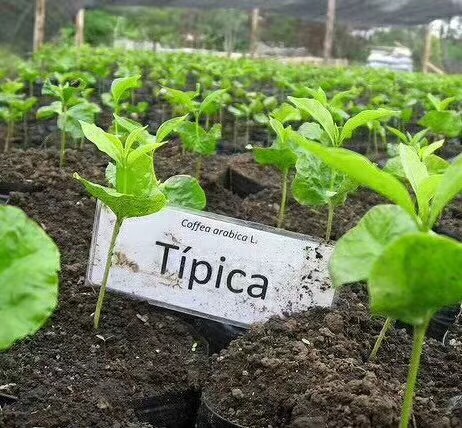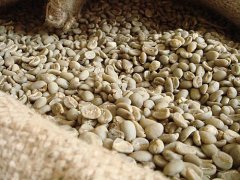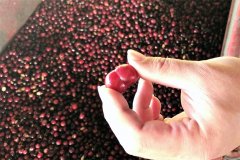Measured data of coffee bean cup treated with yellow honey in Tara Jupena Pena Farm, Costa Rica
For professional baristas, please follow the coffee workshop (Wechat official account cafe_style)

Treatment of Yellow Honey on Pena Farm in Tara Zupena, Costa Rica
Costa Rica is the most stable and best coffee in Central America, coffee production has a very long history, as early as the 19th century 1800 coffee has been exported to the United Kingdom. In 1880, the concept of fine coffee had not yet been formed, and many high-altitude high-quality coffee (SHB) mixed with flat coffee were not particularly singled out. Due to long and narrow terrain factors resulting in great differences in latitude, altitude, soil, rainfall, temperature and other natural conditions gave rise to a wealth of coffee varieties, but in Costa Rica Robusta varieties are prohibited by law, only Arabica varieties are allowed. Common are Caturra Kaddura, Catuai Kaduai, Villa sarchi, Ceisha, Bourbon bourbon, Villalobos. The most common way of handling coffee beans in Central American countries is washing, but there are more and more countries with sun-dried beans and Miel Process, which is the most popular in recent years. This trend began in Costa Rica.
Now Costa Rica has responded to the needs of foreign coffee buyers and developed the coffee revolution of "micro mill". The main spirit of micro mill is that every small farm in Costa Rica can have its own micro-processing system, so that it can be received and processed from the coffee and bagged by the farm itself. Farms can dispose of their own coffee beans in the simplest, fastest and cheapest way, so that the coffee is of the best quality and the farm is more profitable, but it also means that small farms are responsible for the coffee they produce and handle.
In Costa Rica, honey treatment and sun-dried beans are derived from small farms with certain difficulties. Pena Pena Farm is located in the Tarazu Valley, about 70 kilometers southwest of San Jose, the capital of Costa Rica. This is a paradise area with rich green vegetation and clear rivers. Coffee beans are harvested once a year, and the harvest begins in December and lasts until March of the following year, with an average annual rainfall of 2900 mm and an average temperature of 18 degrees Celsius.

Property Characteristics: farm characteristics
Farm Farm name: La Pena
Farmer Farm owner: Santa Cruz
Region producing area: Tarrazu Valley Tarazhu
Country country: Costa Rica
Altitude altitude: 1650-1700m
Coffee Characteristics: coffee characteristics
Variety varieties: Caturra, Bourbon, Typica Kadura Bourbon Tibica
Processing System treatment: Honey honey treatment
Harvest time: End of November-March November to March of the following year
Top Jury Descriptions judge's comment: the baking degree measured by the cup for 60 seconds at the beginning of the first explosion (Cinnamon)
Aroma aroma / flavor flavor: clove, peanut, cinnamon, black tea, basil, peach, maple syrup, caramel
Sour: Apple, blueberry, yellow lime, acid with ester slippery taste
Complex complexity and other other: spice dry aroma is great, simple and clean little change, velvety taste, peach and apple sweet
Overall style attributes: very smooth, sweet peaches, flavor of the new century

Cup test date: 2013.11.26
Dry aroma: 10
Wet aroma: 9
Clean: 9
Sweetness: 9
Acid quality: 8
Palate: 9
Flavor: 8
Yu Yun: 9
Balance: 9
Overall: 9
Cup test score: 89
Important Notice :
前街咖啡 FrontStreet Coffee has moved to new addredd:
FrontStreet Coffee Address: 315,Donghua East Road,GuangZhou
Tel:020 38364473
- Prev

Record of Elean Elena Sun Coffee Bean Cup in High altitude Coffee Town of El Salvador
Professional barista exchanges please pay attention to the coffee workshop (Wechat official account cafe_style) El Elean Elena sun beans El Salvador is the smallest in Central America, the country's most densely populated country, most of the region's main crops are coffee beans, but do not forget its existence because of its mini, 60% of the coffee in El Salvador is Bourbon.
- Next

Characteristics of Guatemalan Vivette Nan Fruit Coffee beans Market Price of Guatemalan Coffee
For the exchange of professional baristas, please follow the coffee workshop (Wechat official account cafe_style) Guatemala Guatemala, which is famous for its highland topography, famous coffee producing areas include: Antiqua (Coban) Atitlan (Huehuetenango) San Marco (San Marco) among which Vivette Nanguo is the top elite.
Related
- Detailed explanation of Jadeite planting Land in Panamanian Jadeite Manor introduction to the grading system of Jadeite competitive bidding, Red bid, Green bid and Rose Summer
- Story of Coffee planting in Brenka region of Costa Rica Stonehenge Manor anaerobic heavy honey treatment of flavor mouth
- What's on the barrel of Blue Mountain Coffee beans?
- Can American coffee also pull flowers? How to use hot American style to pull out a good-looking pattern?
- Can you make a cold extract with coffee beans? What is the right proportion for cold-extracted coffee formula?
- Indonesian PWN Gold Mandrine Coffee Origin Features Flavor How to Chong? Mandolin coffee is American.
- A brief introduction to the flavor characteristics of Brazilian yellow bourbon coffee beans
- What is the effect of different water quality on the flavor of cold-extracted coffee? What kind of water is best for brewing coffee?
- Why do you think of Rose Summer whenever you mention Panamanian coffee?
- Introduction to the characteristics of authentic blue mountain coffee bean producing areas? What is the CIB Coffee Authority in Jamaica?

